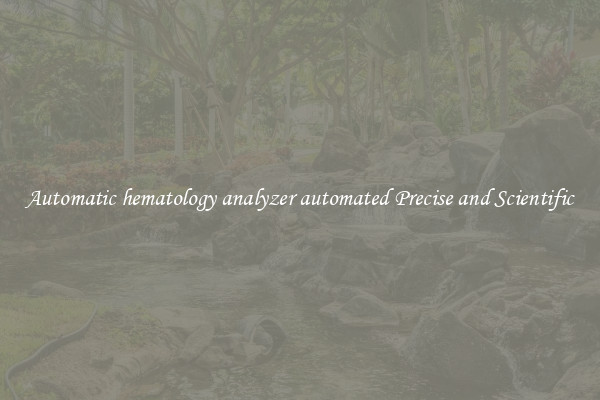Automatic glycated albumin Precise and Scientific
Automatic glycated albumin (GA) precise and scientific testing has emerged as a vital tool in the field of diabetes management. As diabetes continues to affect millions of individuals worldwide, accurate monitoring of glycemic control becomes crucial. GA testing offers a more precise assessment of short-term glycemic status, assisting healthcare professionals in making informed decisions about treatment plans and interventions.

Glycated albumin is formed when glucose molecules attach themselves to albumin, a protein found in our blood. This process occurs over a shorter timescale compared to the widely-used hemoglobin A1c (HbA1c) test, capturing changes in blood glucose levels over the past two to three weeks. This makes GA testing particularly useful in monitoring short-term glycemic fluctuations and assessing treatment effectiveness promptly.
The advent of automatic GA testing has brought several advantages to the field. Firstly, the automation ensures superior accuracy and precision in the results obtained. The automated process eliminates human error and variability, reducing the chances of misinterpretation. This allows healthcare professionals to trust the results and make critical decisions based on the information provided.
Secondly, the automatic GA testing offers a more streamlined approach, making it a feasible option in busy clinics and hospitals. The process is quick and efficient, providing results within a matter of minutes. This ensures that healthcare professionals can promptly review the patient's glycemic control and make necessary adjustments to the treatment plan if needed.
Furthermore, the use of automation in GA testing allows for enhanced reproducibility. The results obtained are consistent and reliable across different settings, ensuring standardized care for patients regardless of their geographic location or access to healthcare resources. This promotes equity in diabetes management and enables healthcare professionals to provide evidence-based treatment recommendations.
Beyond its precise and scientific nature, automatic GA testing also presents opportunities for patient engagement and empowerment. The quick turnaround time of the test results allows for real-time discussions between healthcare professionals and patients. This promotes a collaborative approach, empowering the patients to actively participate in managing their diabetes. Patients can gain a better understanding of the impact of their lifestyle choices and medications on their glycemic control, leading to improved self-management practices.
In conclusion, automatic GA testing represents a significant advancement in the field of diabetes management. Its precise and scientific nature allows for accurate assessment of short-term glycemic control, aiding in treatment decisions. With automation, the process becomes more efficient, reproducible, and patient-centric. As we continue to combat the global burden of diabetes, automatic GA testing presents a valuable tool in achieving better glycemic control and improving patient outcomes.

View details

View details

View details

View details








